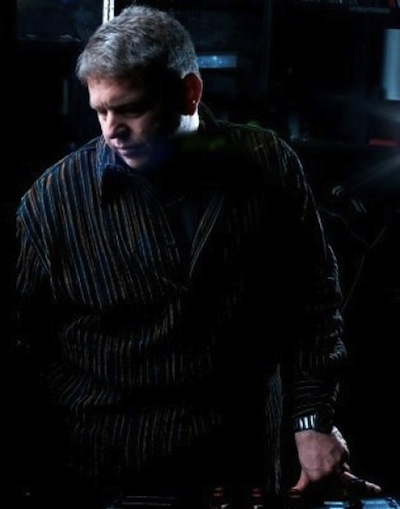By Dennis “Citizen” Kane (Disques Sinthomme, Ghost Town)
BPM Interview #14
It’s early in the evenings set at LOVE and I am playing a Balearic classic, a Mike Francis record with emblematic 80’s production, rich vocals, acoustic guitar and lush synthesizer washes. I just can’t believe how good it sounds, the warmth of the record, the fidelity of the mid range, the soft weight of the lows. I’m playing the record on a technics 1210 with a modified SME tone arm; it’s passing through a customized Urei mixer and emerging from an analogue sound system designed by this month’s interviewee Gary Stewart.
GSA (Gary Stewart Audio) has been a premier designer of club sound systems since the early 80’s. He has taken up the mantle of analogue sound design from its principle architect, the late Richard Long. In fact it was the result of an epiphany that occurred to Gary while poring over Richard’s late design notes: The supple and dynamic sonic range he wanted his systems to represent could be found in the modulation of an analogue structure. I recently sat down with Gary to cover his history and see what brought him to that revelatory point.
DK: OK Gary, how did you get to be the “Sound Guy” (laughter)
GS: I actually started as a musician; I had studied with a Gene Dell (a jazz guitarist) and was at the Manis College of music for trumpet, it was time for classical theory and the jump to the piano, and I made the jump to Studio 54. (laughter)
DK: A different kind of schooling…
GS: I would be there six or seven nights a week, the sound was so dramatic, it was a Richard Long system, they had the 3 way “Waldorf” horn loaded boxes, The “Levan” sub-bass horns, “Z” tweeter arrays and the “Ultima” stacks, with Richards 3-way crossover…it was like nothing I had ever experienced before, the records being played sounded so fresh, above and beyond the way I had heard them prior. Eventually I met Richard there one night, I was like “who are you”? The experience of that system changed the way I felt about music, it was really sublime.
DK: How did you transition into setting up systems?
GS: When I was about 19 I had started building Dynaco stereo products from a kit. I did it with my dad as a hobby, we weren’t that good, and invariably would have to take our stuff for repair, but I remember a service guy telling me my soldering work was very tight. I stayed with it, not really projecting a career but just enjoying it. I remember I once tried to test an amplifier with a toaster as a load, (laughter) don’t try that at home. I accrued more and more components over time. [Read More]



Gary was my best friend all through the 1980s & early 90s I met him when I was a DJ at studio 54, working thursdays & sundays, on and off from 1982 to 1984. I was the first person to show him a richard long system, up close. After we met we became friends right away. We did everything together. Went to all the clubs, fire island ect. I gave him his very first euri mixer & his very first set of turntables, original technics 1200 mk1. I helped him get his first client. It wad in 1986. It was bringing in a mobil soundsystem into a club called Regines in nyc. He was the best friend I ever had. Those days hanging out in the booth at studio 54 I will never forget. Richard Long started it all. But I think that Gary Stewart, took it to a higher level. With the exception of patadise garage, I dont think any of Richards systems matched a GSA system. But thats just my opinion. I will always love you gary god bless you. RIP.
now Frankie and gary are gone,richard long and larry lavan are gone all the people are leaving. dam before we could meet,if you have a Richard long or gary sewart crossover let me know I am starting a business upstate and need some speaker builders mike peace